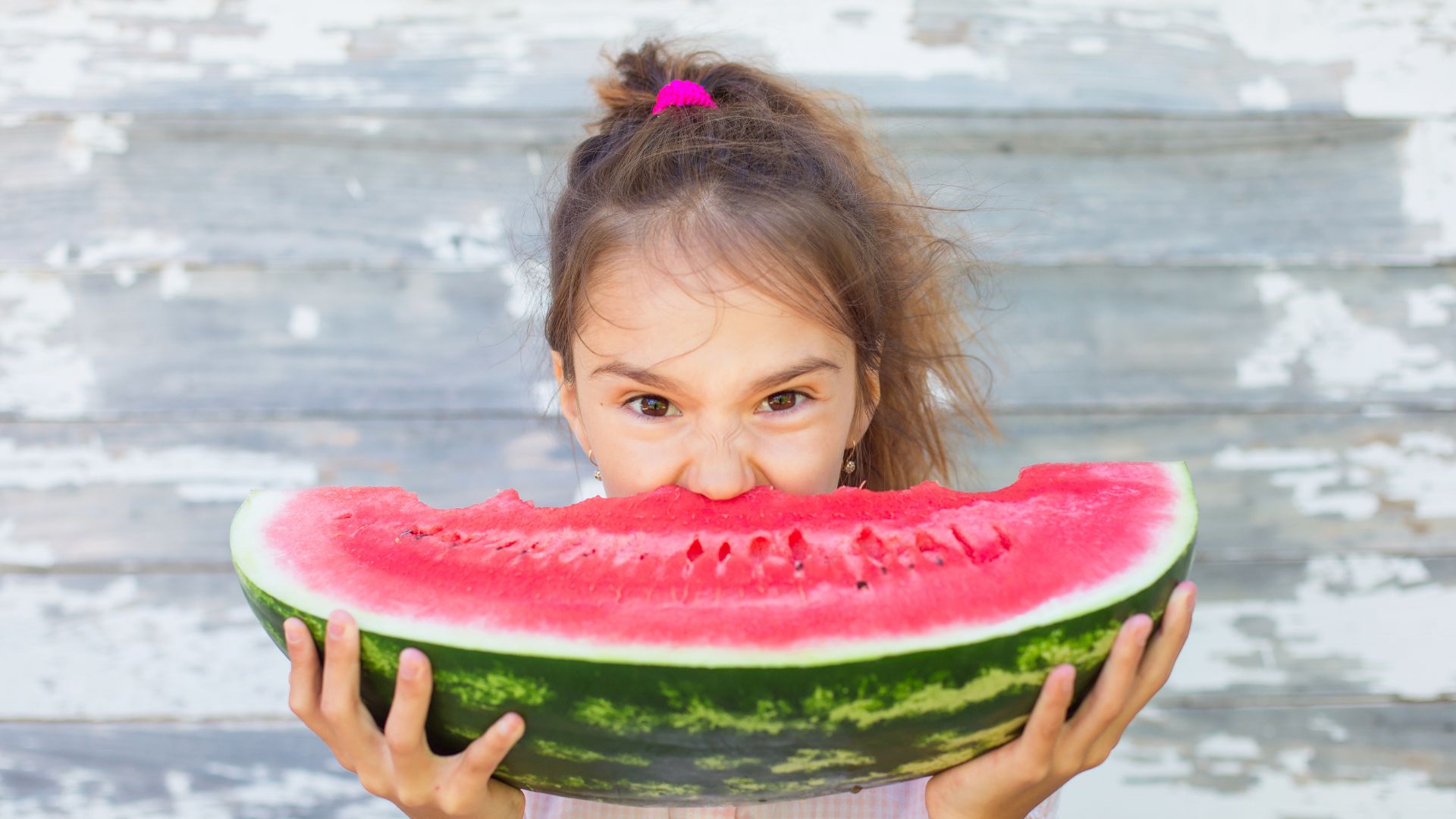
13 Mar Weight Loss For Children: A Guide
We frequently see parents who come to us asking for advice on healthy eating and weight loss for children. This is no surprise, given skyrocketing childhood obesity rates.
A new study published in The Lancet predicts that by 2050, one third of children and adolescents worldwide will be overweight or obese. This equates to 745 million young people. The analysis tracked data from 204 countries and revealed that obesity rates tripled between 1990 and 2021. It forecasts that by 2050, more boys aged 5-14 will be obese than just overweight.
Obesity often is not resolved after adolescence and brings with it serious health consequences including diabetes, heart disease and cancer. Addressing this issue in childhood is essential for preventing lifelong health challenges.
So with the rates of children living with obesity rising, what can you do as a parent or caregiver to keep your child happy and healthy? Through our work we clearly see how our relationships with food form at a young age. Setting healthy routines at a young age gives our children the best possible chance at maintaining a healthy diet (and a healthy weight) throughout their lives.
WEIGHT LOSS FOR CHILDREN: HOW DO YOU HELP KIDS LOSE WEIGHT?
DON’T SAY THE ‘W’ WORD
Firstly, discussing weight with young children is not necessary and can be very damaging. Speak with many adults who struggle with their weight or relationship with food and you will find that many of them were exposed to discussions about weight and dieting at a young age. This can form the beginning of a life-long battle. Any conversations with your child on the topic of diet should be focused on healthy eating and the importance of food as a part of a healthy lifestyle. Put the scales away, too. Children don’t needs to become obsessed about a number on a scale. Instead, positive conversations around the benefits of choosing nutritious foods are much more constructive. You’ll be able to see their body shape change as they adopt healthier habits.
FOCUS ON WHOLE FOODS
Focus on whole, single ingredient foods as much as possible. A piece of fruit is a whole food, a fruit winder or yoyo is not. While cooking every meal from scratch might not be feasible for working parents, try and food prep where you can. Batch cook and freeze meals if you are able to. When you can’t, opting for simple meals made with organic, whole food produce, will make all the difference. Rather than a frozen pizza, how about dippy eggs with veg sticks and sour dough bread? Avoid buying processed foods marketed as healthy, particularly those labelled ‘low fat’ or ‘diet’. More on this next…
AVOID ULTRA PROCESSED
Many children are eating a diet that is far too high in ultra processed foods. Reports suggest that more than 60% of the calories children consume is from ultra processed foods. It’s consumption is linked to higher risks of obesity, high blood pressure, high cholesterol, and some cancers. Opting for foods like biscuits, frozen pizzas, crisps and sliced breads might seem like a time-saver. The truth is, the health risks far outweigh any benefits. Many foods are marketed to parents as healthy, when the truth is far from it. Knowing how to spot an ultra processed food, and avoiding them as much as possible, is one of the best things you can do for your child’s health. Here’s a guide to ultra processed foods which explains how to spot an ultra processed food.
5-A-DAY
The best help-yourself snacks to have in the house are a variety of veg. Lower sugar fruits like berries are amongst the best fruits but we recommend vegetables take priority over fruit. Try and normalise eating a variety of fruit and vegetables with a colourful chart like this one from Etsy, which helps children to have fun by trying to eat the rainbow every day. If your kids are fussy, lead by example and make sure they see you eating plenty of healthy foods. Alternatively, get creative and hide veg in their meals. A super smoothie packed with spinach plus half a banana for a touch of sweetness and a spoon full of nut butter for healthy fats and flavour will go down well. Bolognese with extra veg or a cottage pie topped with a sweet potato and cauliflower mash. There are plenty of child-friendly dinners that could squeeze an extra portion of vegetables in without them noticing.
PROTEINS AND FATS
As well as focussing on whole foods and vegetables, ensure your children’s meals include a source of protein and healthy fats. This will keep kids fuller for longer, help cut down on snack requests and give them the nutrition they need. Protein is essential for growth and development. Every cell in children’s growing bodies require protein. You can find it in foods like meat (preferably organic and free range), fish, seafood, eggs, tofu, tempeh and pulses. Protein is very satisfying so if you find your children constantly hungry, try upping the amount of protein in their diet.
As for fat, it’s an essential nutrient too, but it’s important they’re getting the right types of fats. Fats in deep fried foods are damaging to health and best kept to an absolute minimum or avoided altogether. Common examples include chips, crisps, nuggets and doughnuts. For healthy fats think olive oil, coconut oil, avocados, nuts and seeds. Omega 3 from oily fish is important too.
MEALTIME ROUTINES
It’s a habit many of us have lost as our lives have become busier, but a mealtime routine is a great way to prioritise healthy eating. If it’s feasible, sit down together with your child / children and eat together. If they’re a bit older, it can be a nice opportunity to catch up with them about what’s going on in their world. Sitting at a table and mindfully eating a balanced meal fosters positive habits. Mindless grazing in front of a screen? Not so much.
TREATS
One trap that many parents fall into (both with their kids and with themselves) is framing food as a ‘treat’ from an early age. Food is primarily fuel. Talking about food in that context, with discussions around the different food types that our bodies need to stay fit and healthy, is much more helpful than focusing on only taste and indulgence. Rewarding good behaviour or special occasions with sweets and chocolates can set habits around emotional eating that may be hard for them to break. Rewards kids with non-food treats too, like time at the park, a new book or a play date with friends. Treat foods don’t have to be unhealthy and we can teach our children to view healthy foods as something to savour. How about a rainbow of colourful fruit and vegetables instead?
SNACKING
We are a nation of snackers. As our lives get busier, the tendency to replace traditional meals with on-the-go snacks is getting more prevalent. The same goes with children. If you have help-yourself snack cupboards at home, you might think you’re saving time and curbing your child’s hunger. But if the cupboard is filled with crisps, biscuits and other nutrient devoid foods, your children won’t be getting the nutrients they need to keep them going for long. What’s more, if they’re helping themselves to endless snacks from the minute they get in from school, when it comes to dinner time, they’re less likely to have enough space to finish their meal (which is likely more nutritionally balanced). Then a couple of hours later they will be hungry again and so the snack cycle continues. Parents who ask us about weight loss for kids can often benefit from focussing on creating healthy, balanced meals and cutting back on habitual snacking. Children don’t need crisps, biscuits and sweets any more than we do.
EATING OUT
Beyond what your kids are eating at home, knowing what they’re having when out and about is key, too. Being aware of what they’re having at school or nursery for lunch every day is important. If they go to a breakfast club, make sure that it isn’t just sugary cereal on the menu. If they get school dinners, check out the menu and pick the healthiest option available. Don’t be afraid to get in touch with the school if you’re not satisfied with the offerings. Check out chefsinschools_uk on Instagram and demand better for your kids! Alternatively, pack your own school lunches if you have time. That way you’ll know exactly what they’re eating (and what they’re not by what they return home).
ARE THEY THIRSTY?
If your child is constantly asking for snacks, there’s a chance they might be thirsty, rather than hungry. Get in the habit of asking them to drink a glass of water every time they tell you they’re hungry. And to come back in 10 minutes if they still need something to eat. There’s a chance they’re not drinking enough water and they might be reaching for food when it’s actually hydration they need. Avoid giving children squash. Even the sugar free ones contain synthetic chemicals and it will make pure water less appealing to them.
SUGAR
It’s recommended that children under four don’t have any added sugar or sweetened foods or drinks. This might come as a shock when you consider how many sweets seem to be targeted at young children! Read out guide to telling just how much sugar is in your food and try limit the amount of sweet foods that are in your child’s diet. You can also get kids involved and educate them on sugar by downloading the sugar scanner app from Change 4 Life, which is fun for kids to scan bar codes and find out more about the nutritional value of the foods they’re eating.
THE BIGGER PICTURE
If we really want to reverse this epidemic of poor metabolic health amongst adults and children, it requires intervention on multiple levels. The widespread availability, acceptability and affordability of ultra-processed foods (UPFs) is a big part of what’s driving this crisis. Worrying data from Imperial College found that more than 60% of calories in children’s diet now comes from UPFs.
The CDC’s Health Impact Pyramid highlights that, after socioeconomic factors, ‘changing the context to make individuals’ default decision healthy’ is one of the most important factors we need to address. At present, it is far easier to make unhealthy food choices than to make healthy ones.
Action that needs taking includes:
Making healthy food more accessible and affordable and UPFs much less so.
Clamping down on advertising and (often misleading) marketing of UPFs.
Drastically improving the health of school meals.
Redesigning urban environments to support active lifestyles.
We also need much more in the way of education (for both adults and children) on nutrition, health and how to take care of our bodies.
Until this happens, we have to take personal responsibility in caring for our own health and that of people we love, including our children.
WORK WITH US
We work with many families who are keen to improve their nutrition and ensure a healthy future. If you’d like tailored nutrition advice that the whole family can benefit from, get in touch with us and book your complimentary call today.


